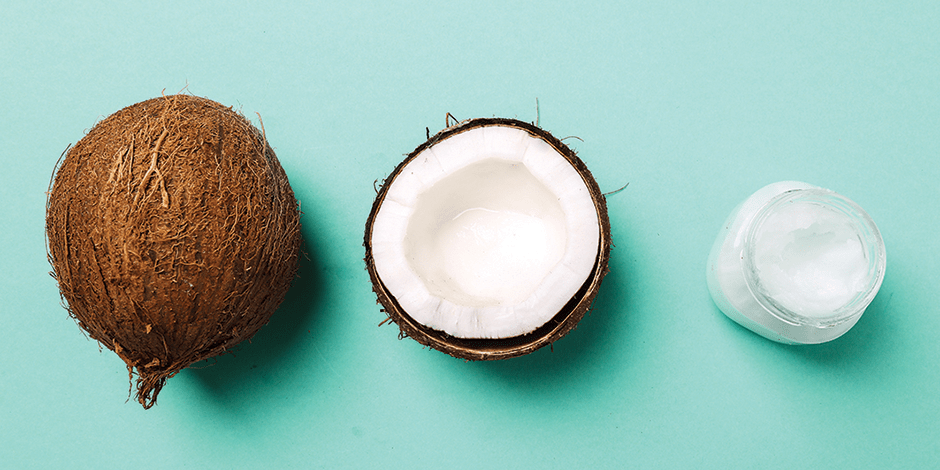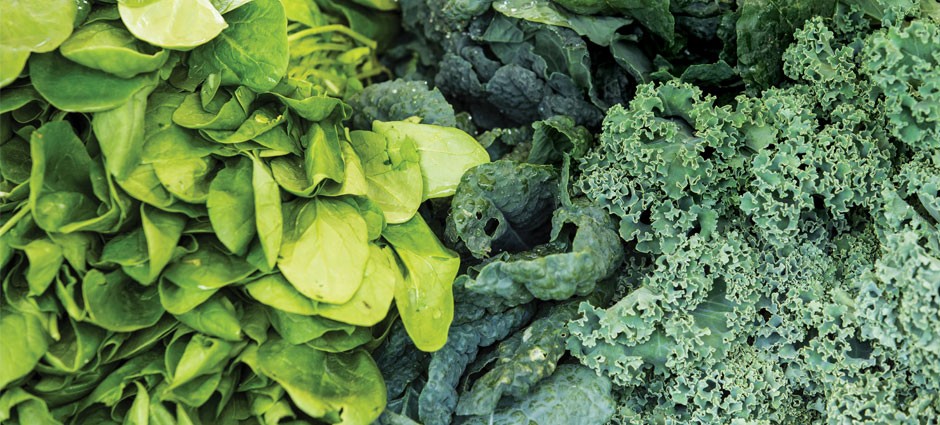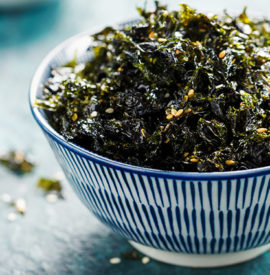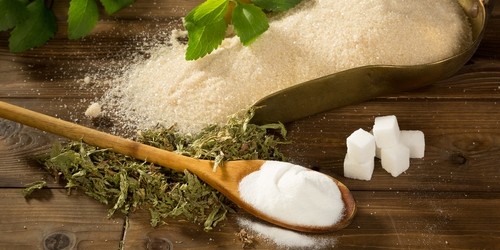If you’ve looked down the aisles in your grocery store lately, you might think everything is going, well, coconuts. It’s not far from the truth. Sure, there are still the familiar coconut flakes in the baking aisle, the kind you find in macaroons or sprinkled on cakes and pastries. But now, there’s also coconut oil, coconut water and milk, coconut flour, coconut vinegar, even coconut nectar. And that’s on top of countless chips, cookies, cereals and snacks that contain some form of coconut.
Why the sudden love for all things coconut? Turns out there are a lot of reasons to embrace this unusual nut. Coconuts not only deliver a unique, tropical flavor, they also come with a seemingly endless list of health benefits that extend beyond the food aisles into personal care as well. If you’re thinking of going coconuts, too, here’s what you should know.
What is a Coconut?
In loose terms, a coconut can be referred to as a seed, nut or fruit. It’s the seed that comes from tropical palm trees; the term coconut can refer to the coconut palm, the seed or the fruit. Coconut fruit is in fact not a nut but a drupe (think cherries and olives, fruit whose flesh surrounds a seed). It is commonly referred to as a dry drupe because of its fibrous husk.
Although the fruit of the coconut contains the meat or white edible part, coconut water is the liquid found inside a young green coconut. As coconuts age, they turn brown. Coconut milk is created from the grated meat of a brown coconut, while coconut oil is extracted from the meat of a mature coconut.
A Love-Hate Relationship
“Coconut is full of saturated fats. For those of us who were around in the ’70s or ’80s, there was a real paranoia around saturated fat. It was thought to contribute to heart disease and cancer,” says Stephanie Pedersen, nutrition consultant and author of Coconut: The Complete Guide to the World’s Most Versatile Superfood (Sterling, 2015). Yet, when Pedersen was at natural gourmet-cooking school in the ’90s, she says people in her field began to notice that populations in Southeast Asia and the West Indies ate coconut every day, but their rates of cancer and high cholesterol remained low.
It took the combination of global cuisine becoming more widespread and the arrival of coconut water on grocery shelves for us to realize the benefits coconut has to offer. “Coconut doesn’t grow in our backyard. We come to corn and soy a lot quicker,” explains Ashley Koff, R.D., creator of The Better Nutrition, Simplified Program (ashleykoffapproved.com). “We didn’t think about it beyond the fat part of it, and ‘oh no, that’s bad for us.’ People didn’t think about coconut oil. We didn’t know what to do with it.”
Coconut water, frequently referred to as nature’s Gatorade, reintroduced a healthier version of coconut to the masses. Full of electrolytes, minerals and enzymes, and thought to be an enabler of true hydration, coconut water began to transform coconut in our minds from a health villain to a nutrition superstar.
As coconut has grown in popularity, studies have linked it to improving immunity, metabolism, nervous system and thyroid function, as well as aiding weight loss, balancing cholesterol, and having strong antifungal, antiviral and antibacteria properties. Still, Koff cautions to choose your products wisely. Just because something contains coconut doesn’t automatically mean it is healthy for you. “Hyperprocessed products that contain coconut, or a drop of coconut water in a candy bar or soda, doesn’t guarantee you will receive the health benefits of coconut,” Koff says.
Drink Your Coconuts
Many experts would agree that the latest coconut craze began when coconut water hit the U.S. market about five years ago. The category has grown from roughly no market share to sales just under $400 million in 2014. Not to be confused with a juice or high-fat coconut milk or oil, coconut water is a clear liquid that is found inside young, green coconuts.
For every 4 ounces of coconut water, you get 15 grams of easy-to-digest carbohydrates in the form of sugars and electrolytes. It is low in calories, sugar and sodium, and rich in potassium, which helps enable our cells to absorb water—making coconut water an excellent hydrator.
It has an earthy taste—with detractors going so far as to say it tastes a bit like dirt—but the benefits are worth it. “It’s light and very easy to drink, and it leaves you feeling refreshed because it has a lot of electrolytes, which we need when we sweat a lot and lose sodium, whether from exercise or being in hot weather,” Pedersen says. “It helps when you’ve lost liquids from stomach illness, but it’s also a natural sports drink.”
It also contains small amounts of Vitamin C, as well as iron, manganese, magnesium, zinc and calcium. “These nutrients are all in small amounts, but they are naturally occurring, which means your body recognizes them as food, so they are readily digested,” Pedersen says.
Bring on the Fat
The key difference between eating the saturated fat of a coconut versus that from a steak is that coconuts, like avocados, contain medium-chain fatty acids, also known as medium-chain triglycerides, which are typically found in plant-based fatty acids. “The long-chain fatty acids associated with animal products, such as meat, are the saturated fats associated with weight gain and clogging your arteries,” explains Lisa Cohen, C.N., nutritionist and exercise physiologist at The Aspen Clinic, a wellness and fitness center in Aspen, Colorado.
The medium-chain fatty acids found in coconuts include lauric acid, which can enhance cholesterol levels by increasing HDL and therefore improving the HDL to LDL ratio. They also metabolize differently than their long-chain counterparts, Pedersen explains. “They go straight to the liver from the digestive tract and are used for a quick source of energy.”
This is why we love coconut oil. It is an efficient fuel source that our bodies can burn as energy rather than storing as fat. “Studies show the fatty acids in coconut to be a very powerful tool in boosting thyroid function, metabolism, energy and endurance,” says Cohen. These properties make coconut oil a popular buzzword for both weight loss and heart health.
Coconut and coconut oil also support how antioxidants function in the body. “Studies have shown coconut to have a positive antioxidant action,” says Cohen. “I look at the medium-chain fatty acids as the good guys in the body, helping to stop the oxidative damage that happens to your cells and tissues, which is a problem for both cardiovascular disease and skin aging.”
Pedersen does admit that regardless of the benefits, the saturated fat does make coconut oil a little caloric, at about 117 calories per 1 tablespoon serving. “Some people are really focused on calories,” she says. “As a nutritionist, I am more concerned about the protein you’re getting and the sugar you’re eating. Your body needs calories to move around and do what it does, so we might as well have them from good sources.”
Coconut Oil to Eat
In addition to providing healthy saturated fats, there are more reasons why coconut oil stands out in the kitchen. For starters, it doesn’t go rancid easily, so it can be stored for years without spoiling. In its unrefined form, it has a smoke point of roughly 350° F and 400° F when it is refined, which makes it a good choice for cooking because it doesn’t break down easily at high temperatures. You can add a scoop to a smoothie, or bake or cook with it. It has a mild, creamy coconut taste that is relatively neutral in flavor. Even if you don’t like coconut in baked goods, you will likely enjoy coconut oil.
Coconut Oil for Your Skin
When you’ve finished cooking with coconut oil, if you have any leftover on a spoon or your hands, rub it on your cuticles or skin, says Cohen. “Coconut oil is my favorite body lotion. It makes skin incredibly silky, healthy and radiant.” She suggests leaving a jar in the shower and rubbing it on your skin right before you towel off. If you want to get really creative, she recommends adding a couple drops of your favorite essential oil for scent.
Coconut oil has other body care uses as well: For starters, try it as a hair conditioner or to take off makeup. “It’s brilliant at breaking down waterproof mascara,” says Pedersen, who uses coconut oil as a makeup remover and a moisturizer. She also suggests using it as a shaving cream or bath scrub. To do so, place the coconut oil in the fridge until it is semi-solid. Then, she says, scoop a cup into a blender, whip it up, and pack it into a jar. “This frothy cream can be used as a moisturizer or shaving cream.” Pedersen suggests adding essential oils, lemon zest or herbs for fragrance. “You can mix it half-and-half with Epsom salts to make an amazing bath scrub.”
Coconut Vinegar
Not as commonly known as its oil counterpart, coconut vinegar derives from fermented coconut water. “It’s vinegar, and it tastes like vinegar. I use it the same way I would use a rice vinegar or a white wine in Asian-style dishes,” Pedersen says. “It does have some probiotics and prebiotics to help the good bacteria in your colon. Some people use it like apple cider vinegar and take a teaspoon of coconut vinegar each morning. I have also used it as a facial toner, and it works really nicely.”
Baking with Coconut
The major benefit of using coconut sugar, Koff says, is that it is unrefined and therefore gives you vitamins and nutrients, whereas refined white sugar does not. You can pretty much use coconut nectar or sugar cup for cup to sugar.
Coconut nectar comes from coconut tree flower blossoms. It is on par with using honey or molasses. It’s a bit lighter in flavor than molasses, but a bit heavier tasting than honey. “It really comes down to a texture or taste preference,” Koff says.
Coconut sugar is basically dehydrated nectar that makes for a simple low-glycemic sugar. The only drawback in using it to cook, Pedersen says, is that it doesn’t melt as easily as some sugars. But don’t be deterred. “If you put it in a coffee grinder or food processor, it will help it melt,” she advises.
Coconut Flour
A popular gluten-free baking option, coconut flour is a byproduct from the coconut milk manufacturing process. To make coconut milk, the coconut meat is soaked in water. It is then dried, and the pulp is grated to make the soft coconut flour. Coconut flour is both gluten-free and high in protein—1 ounce contains 5 grams of protein, making it a popular choice with those who follow a paleo diet. But, Pedersen cautions, it can be tricky to work with. “It’s incredibly nutritious, but it’s gummy and creates very heavy, moist food. It takes a lot of liquid to make it work,” she explains.
The key to baking with coconut flour, Pedersen says, is that for every 1 to 1.5 cups of coconut flour, 6 eggs and a cup of water are needed. She recommends using regular flour, or less demanding gluten-free options, and subbing in just 20 to 25 percent of coconut flour. That way you get the key benefits, she says, but a more palatable end product.
- Coconut Replenish Drink
- 1 cup coconut water (or nut milk)
- 1 teaspoon coconut oil
- 2 ripe apricots, stone removed
- 2 soft medjool dates, pits removed
- 2 tablespoons cacao powder
- ¼ teaspoon ground cinnamon
- 1 teaspoon fresh ginger
- Pinch of sea salt
- 5 cubes ice
- Blend all of the ingredients in a high-speed blender. Drink immediately.
- ¾ cup orange juice
- 1/4 cup fresh lime juice
- 2 tablespoons coconut oil
- 1 tablespoon coconut aminos (or use natural soy sauce)
- Salt to taste
- 3 1/2 cups water
- 2 cups black rice
- ½ red, orange or yellow bell pepper, diced
- 2 stalks celery, diced
- 1 cup fresh cilantro leaves, chopped
- 1 cup red onion, finely chopped
- 1/2 cup unsalted, dry-roasted peanuts
- 6 scallions, thinly sliced
- 1 small mango or avocado, diced
- 1 jalapeno, seeded, minced
- In a large bowl, whisk together orange juice, lime juice, coconut oil, coconut aminos and a pinch of salt. Whisk to blend. Set aside.
- In a medium saucepan, heat water to boiling. Season lightly with salt and pour in black rice. Cover, reduce heat to low, and simmer until all liquid is absorbed and rice is tender, about 25 minutes.
- Remove pan from heat and let stand, covered, for 15 minutes.
- As rice stands, add bell pepper, celery, cilantro, red onion, peanuts, scallions, mango or avocado, and jalapeno to large bowl of dressing. Stir to coat ingredients.
- Stir in black rice, stirring gently until coated.
- Allow to sit for 30 or more minutes for flavors to blend. Then serve.
- 2 Hass avocados
- 14-ounce can coconut milk
- ½ cup heavy cream
- ½ cup sugar
- 1 teaspoon lemon extract
- Toasted shredded coconut
- Chopped mint
- Cut each avocado in half lengthwise. Remove the pits. Remove the avocado from the skin and transfer flesh to a food processor or blender. Add the coconut milk, heavy cream, sugar and lemon extract; blend for 2 minutes, until completely smooth.
- Transfer the mixture to an ice cream maker and churn for 20–30 minutes, according to the manufacturer’s directions.
- Remove the churned ice cream from the ice cream maker and transfer to a freezer-safe container. Cover and freeze the ice cream for at least 2 hours, or until you are ready to serve.
- Garnish with toasted shredded coconut and chopped mint.










Comments